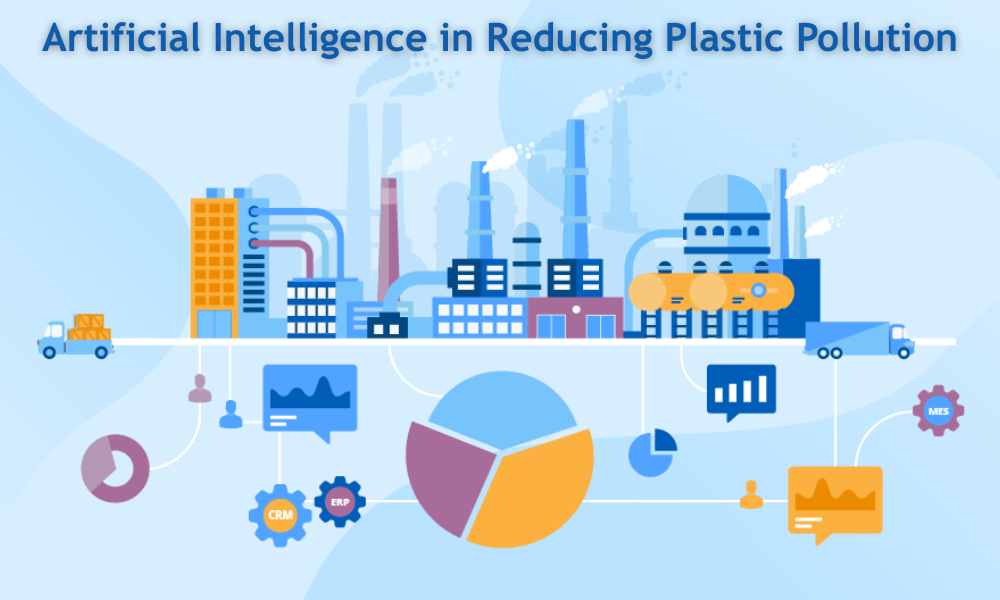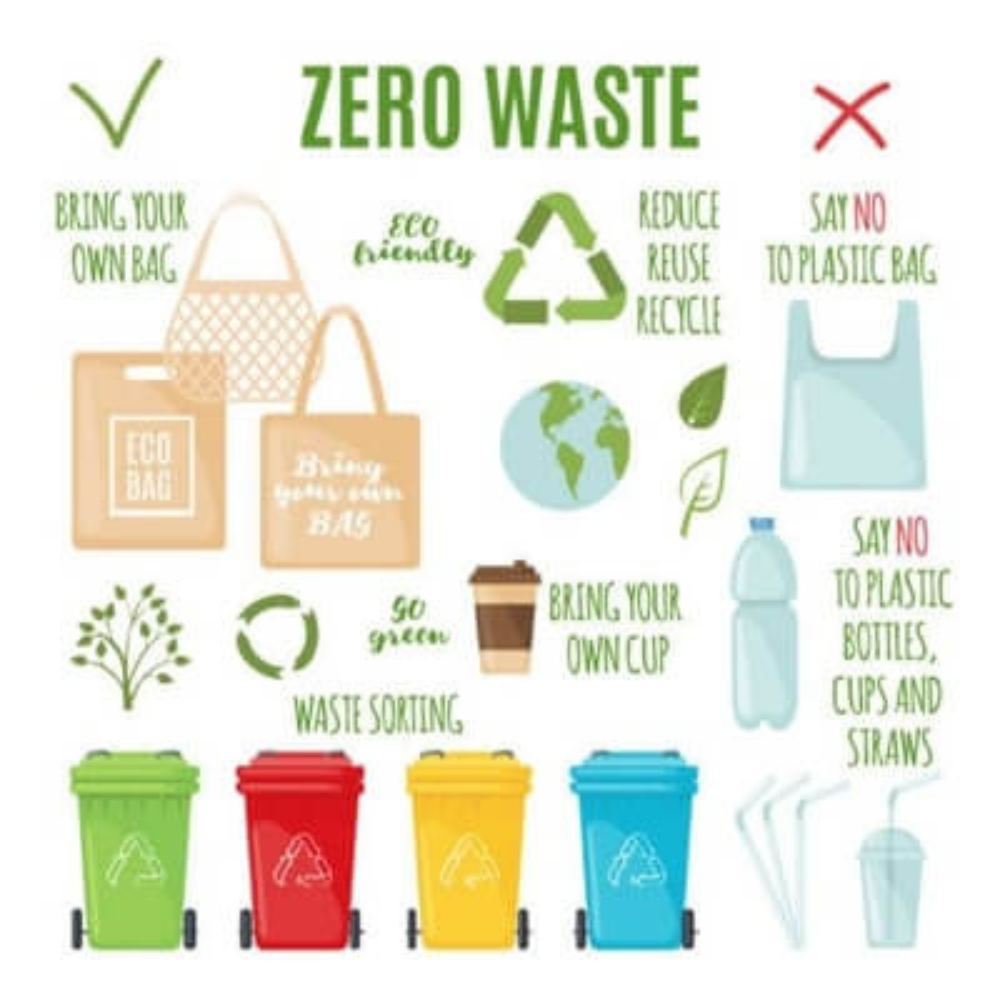The Part of Artificial Intelligence in Reducing Plastic Pollution
Introduction
Plastic contamination has ended up one of the most squeezing natural issues of the 21st century. From seas filled with micro plastics to landfills flooding with non-biodegradable squander, the worldwide dependence on plastic postures serious biological, financial, and wellbeing challenges. In 2025, Counterfeit Intelligence (AI) is rising as an effective device to handle plastic contamination by optimizing squander administration, progressing reusing forms, and making more brilliant arrangements for maintainable generation. This article investigates the ways AI is changing the battle against plastic pollution.

Understanding Plastic Pollution
Plastic is omnipresent in day by day life due to its toughness, flexibility, and moo fetched. Be that as it may, these same properties make it troublesome to oversee at the conclusion of its lifecycle. Key challenges include:
Low Reusing Rates: Universally, as it were around 10% of plastic squander is successfully recycled.
Environmental Affect: Plastic amasses in seas and streams, hurting marine life and ecosystems.
Human Wellbeing Concerns: Micro plastics enter the nourishment chain, posturing potential wellbeing risks.
Waste Administration Wasteful aspects: Customary sorting and transfer strategies are moderate, labour-intensive, and frequently inaccurate.
Addressing these challenges requires imaginative innovations that can handle expansive sums of information, distinguish designs, and mechanize tasks making AI a perfect solution.
How AI is Handling Plastic Pollution
AI is being connected in a few key ranges to diminish plastic squander and move forward sustainability.
-
Shrewd Squander Sorting and Recycling
One of the major obstacles in plastic reusing is the partition of diverse sorts of plastics. AI-powered frameworks utilize computer vision and machine learning calculations to distinguish, categorize, and sort plastics with tall accuracy.
Applications:
Automated Sorting Plants: AI-enabled robots can distinguish plastic sorts (PET, HDPE, LDPE, etc.) on transport belts and partitioned them efficiently.
Real-Time Recognizable proof: Cameras and AI analyze colors, surfaces, and shapes to classify plastics speedier than human workers.
Benefits:
Increases reusing efficiency.
Reduces defilement in reused plastics.
Lowers labor costs and progresses throughput in reusing facilities.
-
Prescient Analytics for Squander Management
AI calculations can analyze information from cities, industrial facilities, and squander administration frameworks to foresee plastic squander era designs. This permits regions and companies to arrange collection, reusing, and transfer more effectively.
Applications:
Optimizing squander collection courses utilizing AI-based coordinations software.
Predicting crest plastic squander periods in urban areas.
Identifying zones inclined to illicit dumping or littering.
Benefits:
Reduces operational costs for municipalities.
Minimizes plastic aggregation in lanes and waterways.
Supports proactive natural policies.
-
AI in Sea and Natural Monitoring
Plastic contamination in seas is one of the most troublesome issues to oversee. AI innovations, combined with disciple symbolism, rambles, and IoT sensors, are empowering superior following and moderation of plastic in water bodies.
Applications:
Detecting Sea Plastic: Machine learning models analyze partisan pictures to find coasting plastic debris.
Monitoring Streams and Lakes: AI-powered rambles identify squander amassing in urban conduits some time recently it comes to the ocean.
Predicting Contamination Spread: AI recreations figure how plastic moves in streams, making a difference specialists target cleanup efforts.
Benefits:
Enhances viability of cleanup campaigns.
Reduces plastic passage into oceans.
Supports marine preservation and biodiversity protection.

-
Optimizing Plastic Generation and Usage
AI is too making a difference producers decrease plastic squander at the source. By analyzing generation information, supply chains, and customer utilization designs, AI can suggest elective materials, optimize bundling, and minimize overabundance production.
Applications:
Designing biodegradable or recyclable bundling utilizing AI simulations.
Predicting item life cycles to diminish overproduction.
Identifying openings to supplant single-use plastics with maintainable alternatives.
Benefits:
Reduces the volume of modern plastic entering the environment.
Promotes circular economy practices.
Encourages economical shopper behavior.
-
Supporting Inquire about and Innovation
AI quickens investigate into plastic options and reusing advances. Machine learning models can mimic chemical forms, distinguish chemicals that debase plastics, or optimize reusing equations for complex plastic blends.
Applications:
AI-assisted disclosure of plastic-degrading microorganisms.
Developing effective chemical reusing forms for blended plastics.
Predicting the execution of reused plastics in unused products.
Benefits:
Speeds up maintainable fabric innovation.
Reduces dependence on fossil fuel-based plastics.
Provides adaptable arrangements for long-term plastic contamination reduction.
Challenges in Actualizing AI for Plastic Pollution
While AI offers promising arrangements, a few challenges remain:
Data Accessibility: High-quality information is vital for AI to work viably in squander administration. Numerous locales need point by point datasets on plastic generation, utilization, and disposal.
Infrastructure Costs: AI-powered reusing plants and observing frameworks require critical investment.
Integration with Existing Frameworks: Bequest squander administration frameworks may not be consistent with AI technologies.
Ethical and Administrative Contemplations: AI applications must regard security and comply with natural regulations.
Addressing these challenges requires collaboration between governments, private companies, and inquire about institutions.
Real-World Cases in 2025
AMP Mechanical autonomy: Employments AI-driven robots to sort plastics in reusing offices with tall exactness, expanding reusing rates.
The Sea Clean-up Venture: Combines AI and rambles to distinguish and evacuate plastic from seas and streams efficiently.
Plastic Vitality Advancements: AI makes a difference optimize chemical reusing forms to turn blended plastic squander into usable powers or crude materials.
In India, a few savvy cities are receiving AI-based squander administration frameworks to diminish plastic contamination in urban zones, combining IoT sensors, information analytics, and AI calculations for more astute collection and recycling.
The Future of AI in Diminishing Plastic Pollution
In 2025 and past, AI will proceed to advance and give versatile arrangements for plastic pollution:
Fully Computerized Reusing Plants: End-to-end AI-managed plants will handle sorting, cleaning, and handling of plastics with negligible human intervention.
Global Plastic Checking Systems: AI-integrated toady and ramble frameworks will give real-time following of plastic contamination worldwide.
AI-Driven Circular Economy: Prescient models will optimize generation, reusing, and reuse, minimizing plastic squander at each stage.
Consumer Engagement: AI apps will direct people on diminishing plastic utilization, reusing accurately, and making maintainable choices.
Conclusion
Plastic contamination is one of the most basic natural challenges of our time, but AI is demonstrating to be a game-changer in tending to it. From keen squander sorting and prescient analytics to sea observing and maintainable generation, AI offers arrangements that are quicker, more effective, and scalable.
While challenges like information accessibility, foundation costs, and integration exist, the collaboration of governments, businesses, and AI trailblazers is making a pathway toward a plastic-free and feasible future.
In 2025, AI is not fair an apparatus for mechanical advancement it is an effective partner in the battle against plastic contamination, making a difference humankind ensure the planet for future eras.
